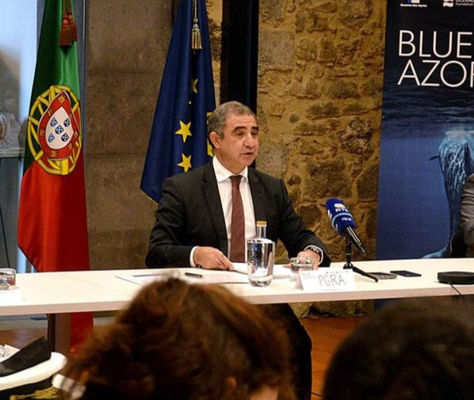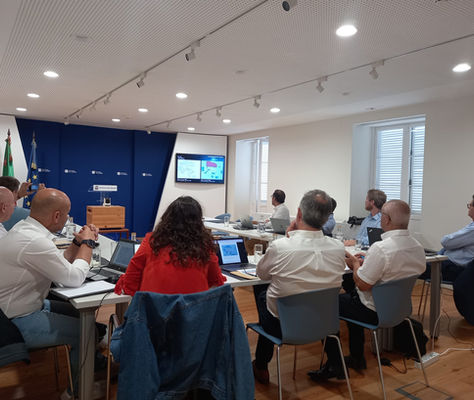
OCEANIC PARTICIPATION PROCESS
Given the heterogeneity of scientific data, uses and activities, and socio-economic impacts, two distinct participatory processes were considered:
1
OCEANIC PARTICIPATORY PROCESS
Focused on areas between 6 and 200 nautical miles of the coast.
2
COASTAL PARTICIPATORY PROCESS
Focused on the areas between the coastline and the 6 nautical miles.
The 6 nautical mile (nm) limit was based on existing fishing legislation, which distinguishes segments of the fleet operating inside and outside this area. Thus, the 6 nm were accepted as the boundary to differentiate the coastal process from the oceanic process.

MEETINGS
The participatory process benefited from the strong intervention of the representatives of 17 stakeholders.
In this context, acting with the knowledge that the commitment to protect 30% of the ocean is only possible with the involvement of marine users, between 2021 and 2023, Blue Azores organized more than 40 meetings with representatives from various sectors, including the main fishing associations, a maritime tourism operators' association, a shipping company, an environmental non-governmental organization, and authorities with competence in MPAs, to advise on a joint solution for the Azores Marine Park.
THE OCEANIC PARTIPATORY PROCESS INCLUDED
19
Months
17
Entities involved
43
Meetings
27
Meetings attended by the fishing sector
9
General meetings
30
Interim meetings
4
Fish force meetings
CHRONOLOGY OF THE PARTICIPATORY PROCESS
OCEANIC MPAS IN THE AZORES
MAIN MEETING OBJECTIVES
The process involved representatives from 17 stakeholders, who contributed their knowledge to enrich the process and optimize solutions for the conservation and sustainable use of marine resources.
During the meetings, the stages of the revision of the oceanic MPAs were discussed, including the definition of a shared vision for the sea of the Azores, strategic and specific objectives, as well as the criteria to achieve them.
1
Develop a joint vision.
4
Create a collaborative design with everyone involved.
2
Present the scientific data available in the region, as a basis for the priority marine areas to be protected, minimizing the impacts on fishing activity.
5
Identify complementary measures and challenges.
3
Present, discuss and approve conservation objectives.
DESIGN OF THE PROPOSED
MPA NETWORK
The program aimed for an effective, efficient, and sustainable solution for the oceanic MPAs, resulting from the high level of participation and the consensus reached among the parties. However, after 8 general meetings, the designed network did not fully meet the agreed conservation objectives.
Therefore, to achieve these objectives, minimum necessary areas were added, based on scientific advice, to maximize conservation goals while minimizing the impact on professional fishing activities.

This work resulted in the development of a legislative proposal for the RAMPA, which incorporates scientific advice, contributions from stakeholders, and international best practices.
In June 2024, after a public consultation period that contributed to improving the proposal, it was forwarded for discussion at the Legislative Assembly of the Autonomous Region of the Azores (ALRAA), where it was subsequently discussed and approved in October of the same year.
Learn more about the legislative proposal, here.
ENTITIES INVOLVED
The stakeholders involved in this participatory process, called the Working Group, included the following entities:























.jpg)